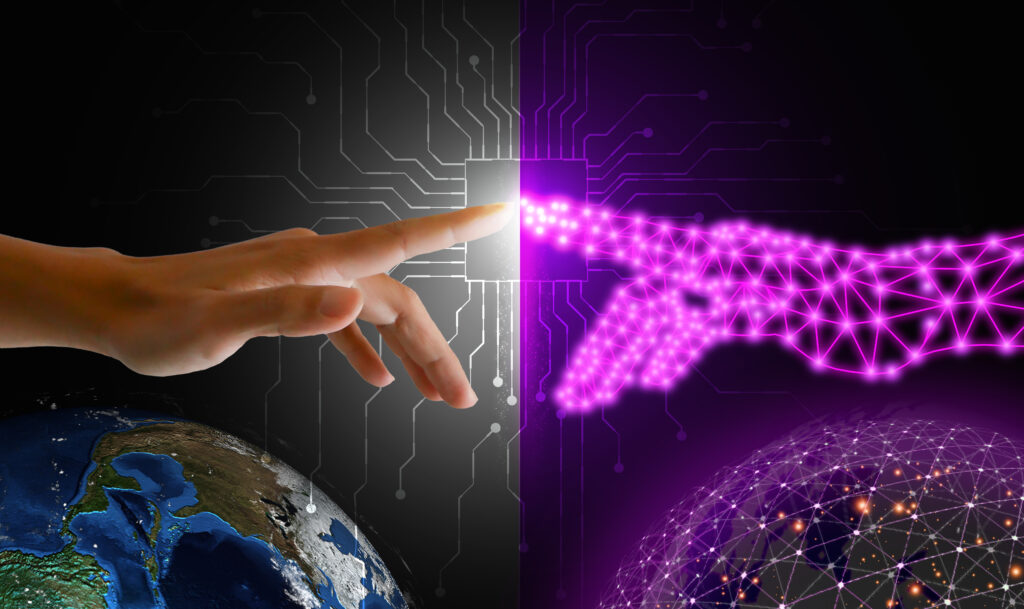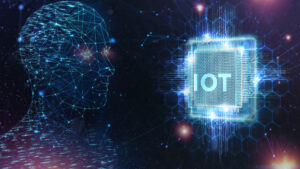From smart factories to smart cities, digital twins are becoming integral to the Internet of Things (IoT). As virtual representations of physical objects and systems, digital twins visualize, analyze, and optimize operations through real-time data and simulations. This technology boosts efficiency, reduces downtime, and meets sustainability targets across the manufacturing, infrastructure, and automotive sectors. With capabilities spanning predictive maintenance, asset management, and process modeling, digital twins provide actionable insights to help you capitalize on the promise of IoT. In this article, learn how implementing digital twins can future-proof your organization.
What Are Digital Twins?
Digital twins are virtual representations of physical devices or systems connected to the Internet of Things (IoT). They are computer simulations that mirror the lifecycle of a physical twin. Using real-time data from sensors, digital twins can monitor the status of connected assets and systems. They create a feedback loop between the physical and virtual worlds, enabling comprehensive analysis, monitoring, and optimization.
How Digital Twins Work
- Digital twins are built on complex algorithms and machine learning models that process incoming sensor data to determine the current state of a physical device or system. They can run simulations to predict how it may perform in the future under different conditions. By analyzing historical data, digital twins identify patterns and insights that help to detect anomalies, prevent downtime, and optimize performance.
Benefits of Digital Twins
For businesses, digital twins provide significant benefits:
- Improved product design. Simulations help identify potential issues before a physical prototype is built.
- Optimized operations. Digital twins give visibility into how effective processes are and where improvements can be made.
- Predictive maintenance. By monitoring a digital twin, issues can be detected early and maintenance scheduled proactively. This reduces unplanned downtime and costs.
- Sustainability. Digital twins enable the optimization of energy usage and material efficiency. Their simulations help find the most sustainable way of operating a system.
In summary, digital twins are a key enabling technology for Industry 4.0. They facilitate data-driven decisions that enhance productivity, cut costs, and minimize environmental impact. With the growth of IoT connectivity, digital twins will transform the way businesses design, build, and operate connected systems.
How Digital Twins Work With IoT

Data Collection and Monitoring
- Digital twins rely on data from IoT sensors and devices to function. They collect real-time data on the performance, condition, and environment of physical objects. By analyzing this data, digital twins can closely monitor connected systems and detect inefficiencies or issues immediately.
Simulation and Predictive Analysis
- The data from IoT devices also allows digital twins to create simulations of the physical world. They can simulate how changes to connected systems might impact key metrics like performance, costs, and sustainability. Using predictive analytics, digital twins anticipate future states and optimize systems before changes are implemented in the real world.
Optimization and Control
- Once insights have been gained from simulations and predictive analysis, digital twins can recommend and implement optimizations to connected systems. They can automatically control IoT devices to make adjustments that improve efficiency, reduce waste, and enhance operations. For example, a digital twin could control a manufacturing system to minimize energy usage during peak periods.
Customized Experiences
- In some applications, digital twins leverage IoT data to create customized user experiences. For instance, a digital twin could tailor the temperature, lighting, and entertainment options inside a smart home based on an individual’s preferences and daily routines. As digital twins become more advanced, they will get better at anticipating needs and personalizing experiences.
With data from IoT, digital twins offer an innovative way to optimize, automate, and gain valuable insights into connected systems. While still an emerging technology, digital twins show significant promise for improving operational efficiency, reducing costs, and enabling sustainable business practices across many industries.
Use Cases of Digital Twins in Different Industries
Digital twins have a wide range of applications across industries. In urban planning, digital twins can model the impact of infrastructure changes on traffic, energy usage, and the environment. Planners can analyze how modifications to public transit, roadways, and utilities may affect a city. Manufacturers employ digital twins to monitor complex equipment and optimize performance. By simulating how a product may operate under different conditions, companies can detect potential issues and make improvements to efficiency or quality.
Urban Planning
- For smart cities, digital twins provide a virtual environment for testing innovative solutions before implementing them in the real world. Planners can model how proposals may influence mobility, sustainability, and quality of life for citizens. Using data from IoT sensors, traffic cameras, and other sources, the digital twin simulates how changes to transit systems, bike lanes or parking may impact traffic flow and congestion. The twin also helps evaluate how new infrastructure may influence energy consumption or pollution levels. By analyzing the impact of changes in a virtual space first, cities can save time and resources.
Manufacturing
- In manufacturing, digital twins are used to monitor and optimize connected assembly lines, machinery, and other equipment. The twin provides real-time data on the performance and condition of physical assets, highlighting any drops in productivity or quality. The digital replica simulates how modifications to the production process may improve key performance indicators like output, downtime, or waste. Manufacturers employ digital twins to predict when critical components may fail so they can schedule maintenance and avoid disruptions. For complex machinery, a digital twin helps identify ways to make systems more energy and cost-efficient while maintaining high standards of quality and reliability.
In summary, digital twins are enabling smarter, more sustainable practices in cities and factories. By providing a virtual model of the real world, this technology allows organizations to experiment with and optimize new ideas before investing resources into changing physical infrastructure or assets. With IoT connectivity, digital twins give an up-to-date picture of how systems are functioning so problems can be detected and solved quickly. The future will likely see digital twins become widely adopted, ushering in an era of highly efficient, data-driven planning and operations across industries.
Benefits of Leveraging Digital Twins and IoT
Improved Monitoring and Analysis
- Digital twins provide a comprehensive overview of connected devices and systems by aggregating data from multiple sensors. This allows for continuous monitoring to detect anomalies, predict failures, and gain insights into performance. By analyzing historical data and running simulations, digital twins enable what-if analyses to optimize operations.
Enhanced Decision Making
- The data and insights gained from digital twins facilitate data-driven decision-making. Operators can evaluate the impact of potential changes to connected infrastructure before implementation. This results in improved planning, resource allocation, and risk management. For example, city planners can model how proposed changes to transit systems will impact traffic and transportation.
Increased Efficiency and Productivity
- Digital twins drive productivity gains through optimizing processes and resources. By simulating different operating parameters, the optimal configuration can be determined to maximize throughput and minimize costs. In manufacturing, digital twins can optimize the layout of equipment, materials flow, and staffing requirements. They provide a holistic view of operations to identify areas of waste and inefficiency.
New Business Opportunities
- The data generated by digital twins enables new data-driven business models. The insights gained can be packaged and sold to customers to improve their operations. Connected device manufacturers can offer premium services to monitor and optimize customer installations. Cities can sell access to aggregate data on traffic patterns, transit usage, or environmental metrics to third parties. Digital twins thus open up new revenue streams and partnerships.
In summary, digital twins offer significant benefits in an IoT context. They enhance monitoring, decision-making, and productivity while creating new business opportunities. As more devices and infrastructure become connected, digital twins will play an increasingly important role in data-driven operations and management. Leveraging this technology can drive competitive advantage through gains in efficiency, sustainability, and customer value.
Challenges and Limitations of Implementing Digital Twins
Cost and Complexity
- Implementing digital twins requires significant investment in sensors, connectivity, data storage, and analytical tools. The high costs associated with deploying and maintaining digital twins can be prohibitive for many organizations. Developing digital twins also demands highly complex engineering and data science skills that many companies do not currently possess in-house.
Data Management Difficulties
- Digital twins rely on huge volumes of data from various sources to create an accurate virtual model. Aggregating, standardizing, and analyzing disparate data streams can be an arduous process that often requires manual intervention and troubleshooting. Data quality issues are common and can undermine the accuracy and usefulness of digital twins if not addressed properly.
Security and Privacy Risks
- The data required to develop and operate digital twins may contain sensitive information, raising concerns about privacy and security. Unauthorized access to digital twin data and systems could enable cybercriminals to manipulate connected infrastructure or use personal details for identity theft. Organizations must take appropriate measures to encrypt data, control access, and monitor digital twin platforms vigilantly.
While digital twins offer promising opportunities, organizations would be prudent to consider challenges such as costs, skills requirements, data management difficulties, and security risks before undertaking major investments in this technology. Starting with limited, targeted deployments of digital twins can help identify and address these issues, allowing for more widespread adoption over the long run. With strong data governance, a focus on developing internal skills, and close collaboration with technology partners, companies can overcome obstacles and maximize the benefits of digital twins.
Keeping It Simple
Digital twins represent an exciting new frontier in the Internet of Things, offering organizations and industries the ability to gain unprecedented insights into their physical assets and systems. Creating virtual models that accurately reflect real-world counterparts, the performance and behavior of everything from machines to buildings can be deeply understood and optimized. As the supporting technologies continue to advance, so too will the capabilities and ubiquity of digital twins. Any organization looking to maximize operational efficiencies, reduce downtime, extend asset lifecycles, or enable predictive maintenance would do well to explore how they might leverage digital twinning as part of their IoT strategy. The future is bright for this emerging innovation.
More Stories
Taiwan Tightens IoT Gateways with Export Curbs on Chinese Tech Giants
In a bold move echoing through global tech, Taiwan imposed new IoT export restrictions on Chinese giants Huawei and SMIC. Now, Taiwanese firms must seek government approval before working with these companies.
Ultra Ethernet Sets New Standard for Intelligent, Scalable Data Movement in IoT and Edge AI
In the fast-changing world of IoT and edge AI, the Ultra Ethernet Consortium (UEC) launched its groundbreaking 1.0 specification. This new standard redefines Ethernet’s role in smart, scalable data movement.
Meta AI App Adds Warning to Prevent Accidental Sharing of Private Chats
In today's world, digital privacy is more important than ever. Meta has taken a major step to protect user data....
Southern Cross NEXT Lights Up Pacific with Ultra‑Low‑Latency High‑Capacity Cable
The Southern Cross NEXT (SX NEXT) submarine cable emerges as a pivotal innovation, redefining digital landscapes across the Pacific. Officially operational since July 2022, this 15,857 km four-fiber-pair marvel links Los Angeles and Sydney, with crucial connections to Auckland, Fiji, Tokelau, and Kiribati.
Starlink and OneWeb Gear Up to Transform South Korea’s Telecom Terrain
South Korea is entering the low Earth orbit (LEO) satellite communications field with strong government support for SpaceX’s Starlink & Eutelsat OneWeb.
Nokia Powers Next-Gen PON and Wi-Fi 7 Evolution
With the introduction of their co-existence network solution, advanced Wi-Fi 7 gateways, and a high-density 25G PON line card, Nokia empowers operators to meet the increasing demand for robust, high-capacity networks.


